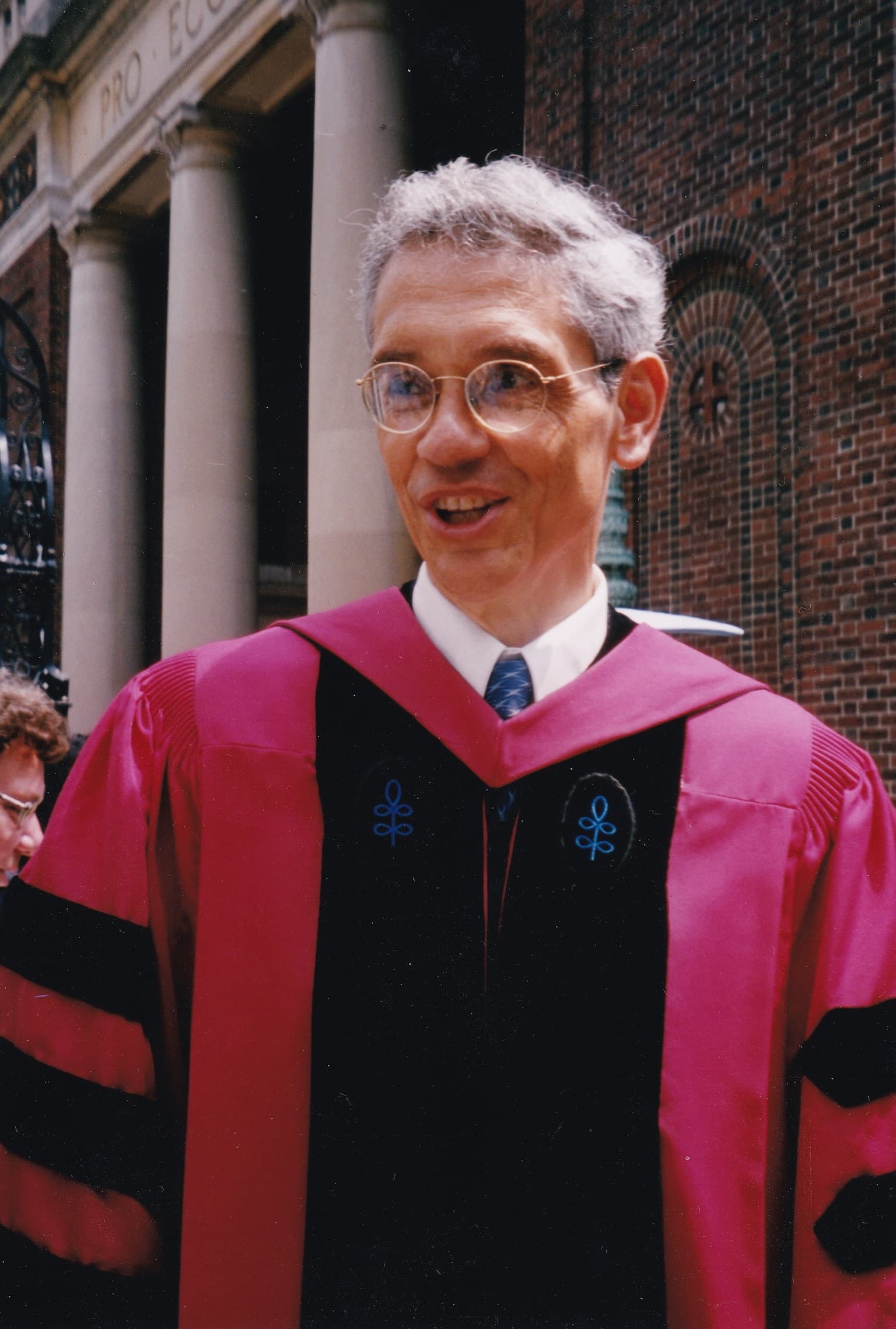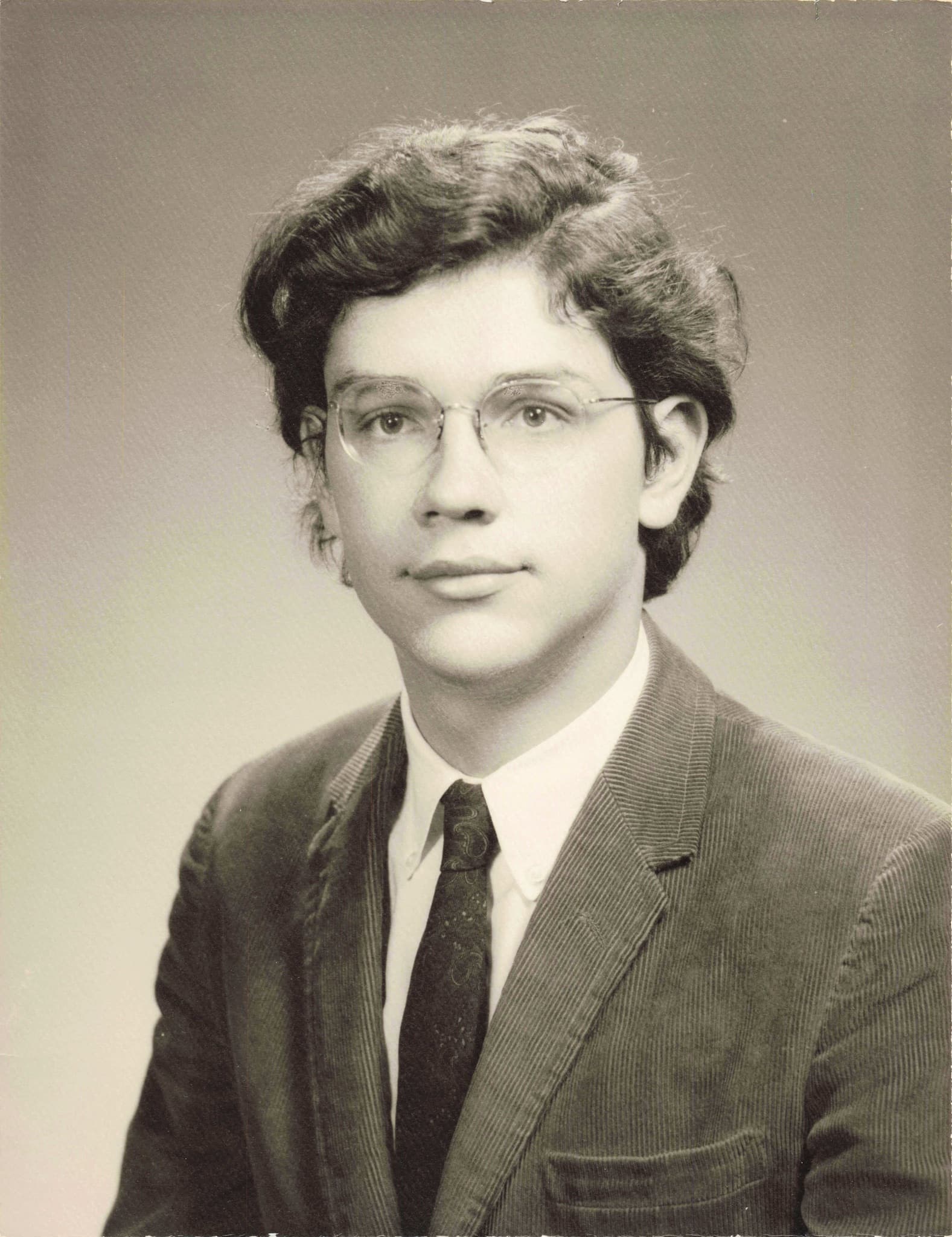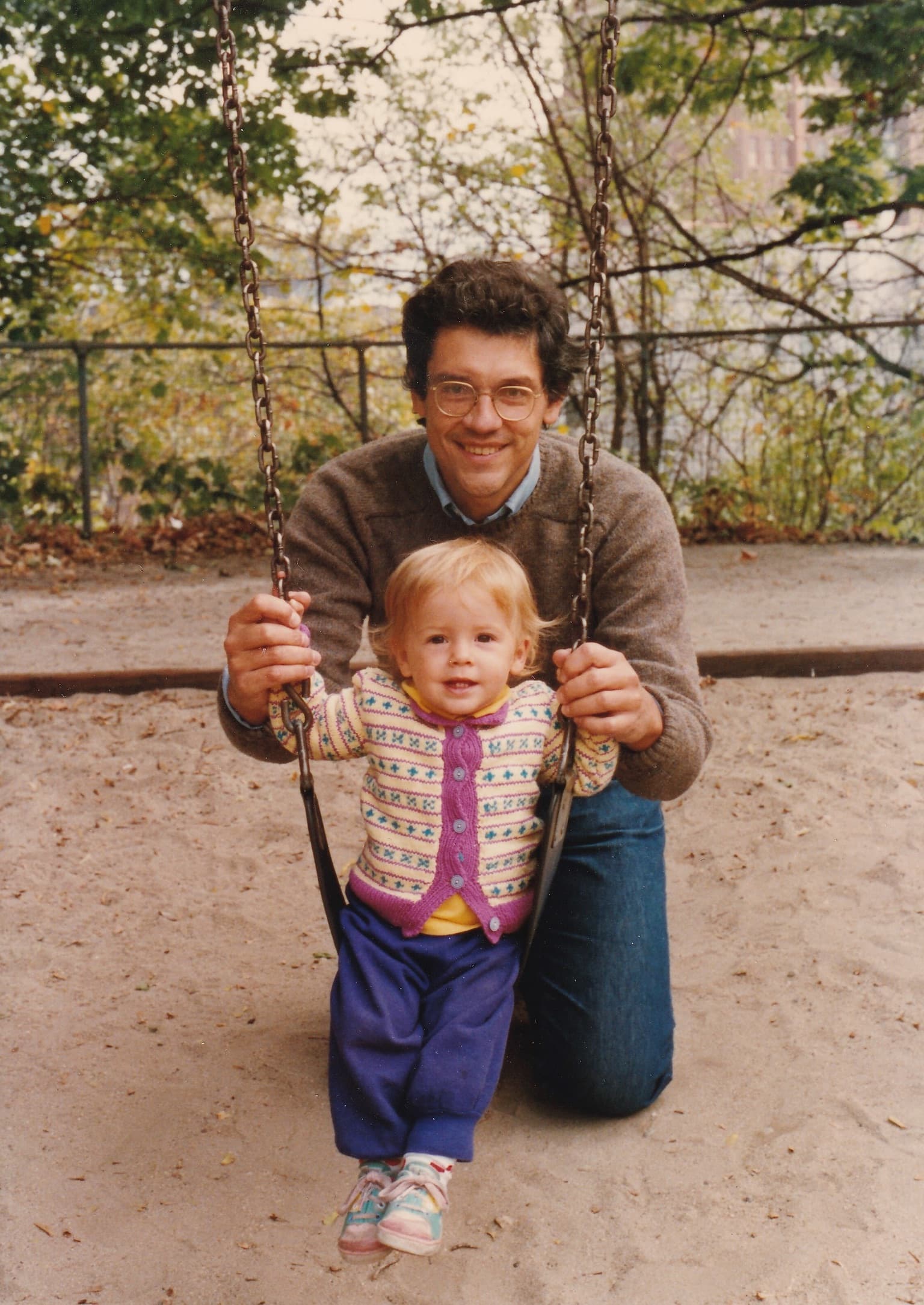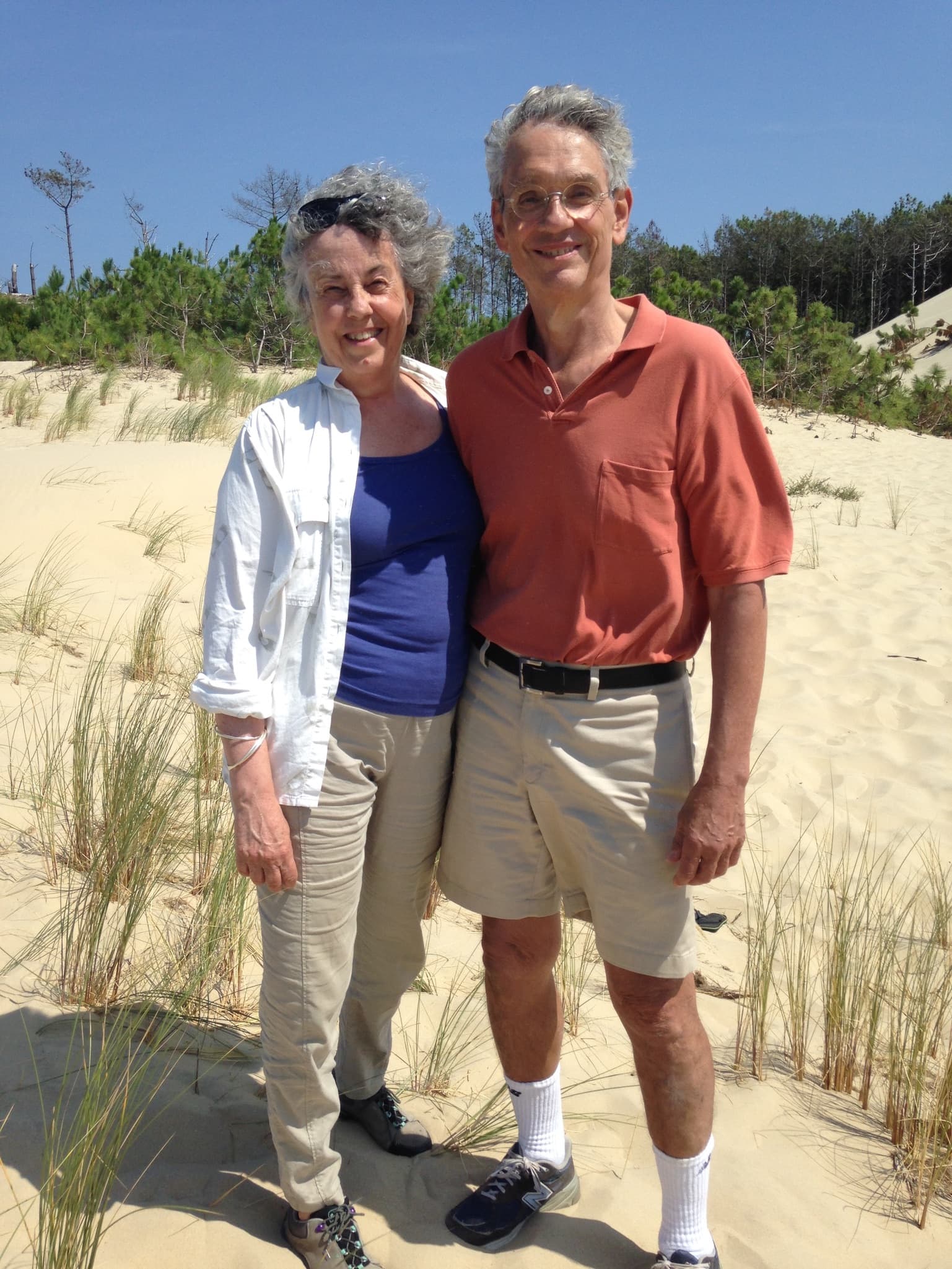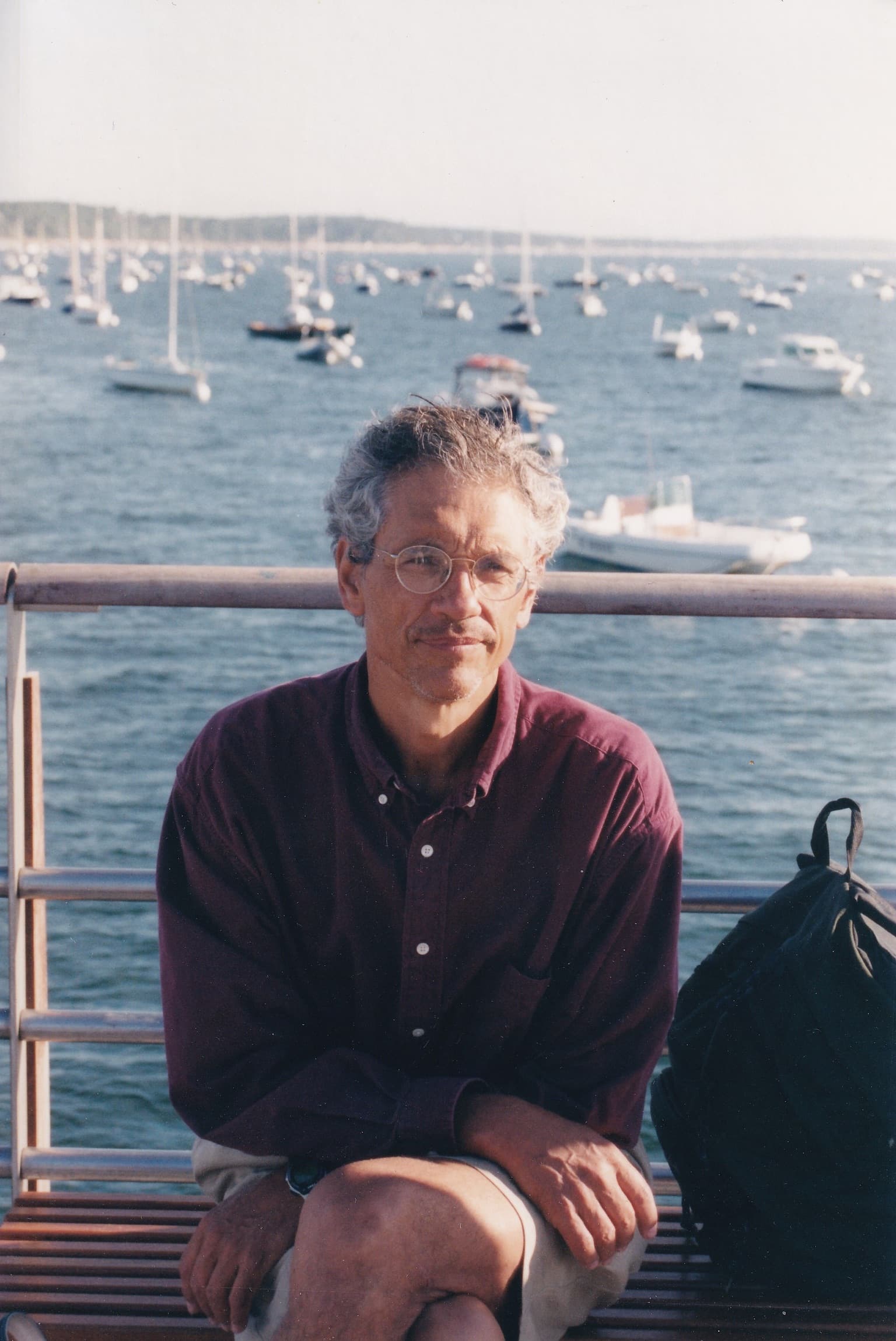Henry Pinkham and I arrived at Harvard in the fall of 1971 to start graduate school in mathematics. For me, it was a momentous step, only two years out of high school and for the first time in my life being on my own. For Henry, it was not, I assume, such a big deal, being about two years older than me, and having already been an undergraduate at Harvard and in addition having spent a mathematical year in Paris just prior. He was thus far more seasoned than me, and ended up taking the rôle of an elder brother, although none of us may have thought in such terms at the time. While some of us may have suffered from unrealistic hopes and ambitions combined with a lack of confidence, Henry struck me as remarkably level-headed. He had a realistic sense of his capabilities and knew what it took. Henry was three-quarter French, his mother French as well as his paternal grandmother, while of course his paternal grandfather was a Pinkham, and that was the family which counted, among other things connected to the Pinkham Notch up in the mountains of New Hampshire. He and his siblings grew up in New York, where his father was a lawyer. When his father got offered a position at the Paris branch of his firm, Henry and his elder brother were put in a French-speaking school in New York in preparation for the move. When in France, Henry attended the lycée (roughly corresponding to American high school as to age, but academically more demanding). However, he admitted later on, he was not fully accepted, but was known as l’americain, and so it was natural for him to return to the States to attend college. His father envisioned a professional future for his son, and was of the conviction that it was only law, medicine and engineering that really counted. Consequently, Henry started out as a pre-med at Harvard, but soon his burgeoning interest in mathematics (for which he had already received prizes at school – and incidentally for Latin essays as well) took over. His father also introduced him to the opera during their Parisian sojourn, to which he often referred fondly. Already as a graduate student Henry had acquired an impressive collection of classical records, especially of opera, for which he had developed a passionate interest. I remember a huge portrait of Verdi hanging prominently on the wall.
Henry Pinkham in academic garb at a commencement at Columbia around 2010 (courtesy of Sophie Pinkham).
©All rights reserved.
Henry and I attended together the introductory course on Algebraic Geometry given by David Mumford (who would soon become our common thesis advisor) during our first year. But our social interaction with each other and other students would not really pick up until our second year, when the department moved from the cramped quarters on 2 Divinity Avenue to the newly built Science center. Now for the first time every graduate student was assigned a little cubicle. The cubicles were arranged in groups of ten or so around so-called talk areas. Henry managed to claim the best cubicle in one of the talk areas, almost the size of a small office, with a window looking out and no window looking in, as was the case with the other cubicles. I and fellow graduate students of Mumford, such as Avner Ash and Linda Ness, moved into the same talk area, and we became a closely knit group. All of this reflected a change of attitude of the faculty towards its students, who now had a more tangible connection to the department and were not as marginal as before. What is cause and what is effect in all of that is hard to know, and most probably a little of both. In all fairness the previous set-up was more or less the norm for most prestigious departments at the time. As Philip Griffiths pointed out at the time, graduate students learn as much from their fellow students as from their professors. Be that as it may, it certainly encouraged learning among peers.
Henry was given a problem on deformation theory after his first year. He worked hard on it, and already by his second year he had a paper submitted to Journal of Algebra. I recall how proudly he showed us the proofs. At this time there was no TEX, so it was only in a journal (if even that) that you could see your work properly typeset, and as my father used to say, seeing your name in print is a big boost. To put things in perspective, deformation theory was at the time still in its infancy, and while deforming complete intersections by varying the equations is immediate, the situation is significantly harder in general. A machinery to do so in general had been worked out, but to apply it in non-trivial situations tended to lead to intractable computations. Mumford had realized that looking at cones over curves should make the calculations much easier, and Henry was advised to look at cones over rational normal curves. The task was not only to find non-trivial deformations, but to describe them all in terms of being parametrized by a variety, the so-called versal deformation space (incidentally the term ‘versal’ is derived from the well-known term ‘universal’ when the ultimate ambition of uniqueness in a technical sense, could not generally be achieved). Already at the case of the rational normal quartic, a surprise turned up. The versal deformation space had two components, one 3-dimensional as expected, and one unexpected 1-dimensional (I believe I have seen it referred to as the ‘Pinkham component’ in the literature, but experts assure me that this is but a figment of my imagination; I think he deserves it, maybe by this remark it leaves my imagination and enters the literature). Anyway, examples are only significant as far as they open eyes and new vistas, and the calculation he had performed turned into a method applicable to a much larger family of examples which got incorporated in the thesis (titled Deformations of algebraic varieties with -action) he defended a year later (May 1974), and in the fall of that year it appeared in the Astérisque, the journal of the French Mathematical Society. Not typeset, however, but nicely typed by Laura Schlesinger, who typed all the theses of Mumford’s students. Henry had made it, and he landed a junior position at the Columbia Math Department, and we were all impressed. Little did he know, or even suspect, that he would be attached to that department for the rest of his life. But what was really important to him was that it was in New York, the city of his childhood (he used to wax on about walking along a Manhattan avenue, as in a canyon formed by skyscrapers). But most of all it was a world-center of culture, in particular when it came to music with its world-renowned opera.
Henry Pinkham in his youth, probably at Harvard College around 1966 (courtesy of Sophie Pinkham).
©All rights reserved.
Our relationship might have ended here, as it often does upon graduation, when everyone is dispersed by the wind, pursuing their separate lives. Instead of ending, the second part of it, even more important than the first, would start. In fact, much to my surprise, I would follow him to Columbia the next year. Unlike Henry, I had no sentimental attachment to New York; although it did have since childhood a certain romantic appeal due to the abovementioned skyscrapers, it did on the contrary scare me a bit, and there were actually good reasons for that at the time. Nevertheless, I chose Columbia, and in retrospect it must have been his presence there that tipped the scales. Our first year we shared a nice corner office with a view of Broadway below. I learned to have take-out lunches from the local delis and get my taste of cultural life through becoming a member of both MoMA and the Metropolitan. However, my immersion in the city life was somewhat hampered by regular weekend commutes on Amtrak to my wife in the Boston area. And this brings us to the strange parallelisms of our lives we had started to notice.
Henry Pinkham with his youngest daughter Jess around 1986 (courtesy of Sophie Pinkham).
©All rights reserved.
In the summer of 1973 I was invited with my then girlfriend Mindy to his wedding to Wendy (both names somewhat similar) down in Long Island, and the next summer he was one of the exclusive guests to my own wedding at Arnold Arboretum in Boston. In the spring of 1976 we both applied for leave from Columbia; I to join my wife in Cambridge where she was doing a medical internship, he to accompany his wife to Paris, where she was going to be posted as a lawyer. And at the end of the same year I was divorced, and the following summer so was he, and we both experienced a sense of elation at the perceived liberation we both shared when we met in Paris the following summer. He had bought a ten-speed bicycle (something his ex-wife supposedly had not allowed) and told me excitedly about his recent bike trips with his new girlfriend in the countryside, sleeping over in barns. Henry was something of an athlete. We had both started running at the Columbia indoor track during our common year, and as noted, he liked to bicycle. Furthermore, he told me about his wind-surfing board down at his family’s summer place by the dunes at Cap Ferret, close to Bordeaux (the location of his French roots). This was the first time I heard about such things. His two years in Paris had not been wasted. His thesis had steered him into surface singularities, and he had written some very nice notes on rational surface singularities and simultaneous resolutions of rational double points, delivered at the surface singularity seminar he had run together with the two seniors Demazure and Teissier at École Polytechnique, and published in the Springer Lecture Notes Vol. 777. He had also been pushing the results of his thesis further, developing the so-called Pinkham method of constructing smoothings of so-called negative weight, which would become standard techniques of deformation theory. Clearly he was already establishing himself as one of the young upcoming algebraic geometers.
In the fall of 1978 we were once again united at Columbia. Henry was very happy being back in the States again. Although his identity had, as already noted, a prominent French component, he had come to realize that it was in the States he felt most at home, at least academically, and where his future lay. He also reconnected with his future wife Judy whom he had known a long time before. At the end of that academic year Henry had come up with a very unconventional idea for attacking the problem of degenerations of (polarized) K-3 surfaces, namely to show that either all the components of the degeneration were birationally ruled, or that there was a birational K-3 surface among them, and after a base-change (to get rid of multiplicities of components) all the others could be blown down. The second case, corresponding to finite monodromy, had as a significant corollary that the period map for K-3 surfaces was surjective. I had been given the problem by my advisor Mumford as a graduate student and treated the easy part, namely the case when there were no triple points (meaning that by Hironaka reducing to the case when the degenerate fiber consisted of smooth components meeting transversally there would not appear any triple points) but had been stymied by the intractable combinatorics in the general case, involving complicated birational transformations on three-folds. The strategy was to reduce the canonical divisor of the 3-fold to the special fiber. The Russian mathematician Kulikov had at the time presented a head-on attack along those lines, which had been the subject of some western seminars to understand. However, the formidable birational combinatorics turned out to have been very hard to follow, and there was a need for a more transparent approach. This was exactly what Henry’s approach was intended to do, evading that formidable combinatorics of blow downs and blow ups. He discussed it with me, which was natural as I was after all the local expert by virtue of my previous exposure to it. After a brief discussion during which I must have made some relevant technical comments, he very generously invited me to become his co-author, an opportunity at which I jumped. We wrote up the paper, Henry very much being the senior partner, and he suggested that we go big and submit it to the Annals. He talked about it at a meeting in Athens, Georgia a few weeks later, and in the summer we met up again at another conference, now in Angers, France, and this time it was my turn to present it. I guess it was not a success, I lost everyone, but at this stage of my career I thought of that as rather being an accomplishment. As our colleague Fabrizio Catanese has remarked, you can only properly judge the quality of a mathematician by working with him, and this experience of mine bears it out (incidentally, we would co-write a second paper a few years later, this time on my initiative, but – in the words of Henry – it sank like a stone).
Henry was not a flashy mathematician, who thinks quickly on his feet, and impresses, as well as intimidates everyone, with poignant remarks, especially during seminars and such occasions. Brilliancy, at least not in this sense, was not something you associated with Henry, instead it was solidity which may last longer. Our paper was published, and there was some predictable controversy with the Russian school. Henry’s unconventional approach immediately found resonance among our younger colleagues, and what more can you expect from a paper? A few years later Henry would write another Annals paper, now with Ian Morrison, a paper which had connection with algebraic number theory.
And then, after such a successful start of his mathematical career he ceased to publish. What happened? I can only speculate as coincidentally there was a twenty-year hiatus in our relations on which there is no need to dwell. My guess is that he realized, as you will eventually do at a party, that it is not going to get any merrier. He was satisfied with what he had done, and felt it was time to move on. Many mathematicians in his position might have stuck with it for want of better things to do, but not Henry. He had so many other interests and talents, obvious ones as well as hidden ones it would turn out. He took charge of running the Columbia math department, and revived it in the process. Although this had been intended as an administrative interlude, part of the responsibility of any successful academic, he carried it beyond the call of duty and pursued it passionately, eventually ending up as a dean. He later told me that he had found in himself unsuspected talents, such as fundraising and generally interacting socially with people in ways most mathematicians, by temperament or professional upbringing, have little experience of. He also impressed me, at a lunch he treated me to, how he had arranged a meeting for Columbia alumni to a grand party in Paris renting le Musée d’Orsay. So this is what is going on behind the scenes? I thought. After twenty years we met again (at Provincetown to be precise) at the 70th birthday party of Mumford. We had of course both changed a little, in his case he had gotten a little slimmer, but we hit it off as if the hiatus had never occurred. It transpired that we both had daughters who studied Russian, another sign of the parallelism of our lives (that the daughters shared the same first name did not hurt). Later on we got briefly together in New York, visiting an exhibition at MoMA and having the abovementioned lunch, then to retire to uptown and his apartment (incidentally supplied with new bookcases, courtesy of the studio which had temporarily used the apartment for shooting the film The Mirror has Two Faces, directed by its principal star, Barbra Streisand). We caught up on our lives, and he reminisced on his mathematical career, revealing that he had nursed higher ambitions than he had ever let on. He regretted somewhat that he had gone into algebra, doing analysis instead might have been more fruitful, at least as to applications. In fact, he had already got involved in applications devising algorithms for Adobe PostScript fonts together with Ian Morrison. They even set up a company, which they later sold with a profit, enabling Henry to buy a property in upstate New York, a retreat which many years later would come in good stead during the Covid-pandemic.
Henry Pinkham with his wife Judy at his summer place at Cap Ferret (courtesy of Sophie Pinkham).
©All rights reserved.
When we met in New York, he did not have a cell-phone, whether that was only temporary I do not know. But I definitely sensed it was not a modern gadget of which he approved, just as he did not approve of many features of the prevailing Internet culture (it is hard for me to imagine that he would spend much time on Facebook). All of that I can heartily sympathize with, but I suspect that Henry carried his antagonism even further than I did, and certainly more consistently. This was also very much in character with his preference for writing with a fountain pen, something I was always struck with, being already by then a trifle old-fashioned. His handwriting was strikingly neat, and even more remarkably, he never seemed to make a single false stroke. In the days before e-mail his handwritten letters were for this reason alone a delight to receive. We both shared a passion for reading omnivorously, but unfortunately we never interacted on this; and just as we may regret many things we never did in our youth, we may also regret that we never fulfilled all the potentials of a friendship. When it came to music I was too incompetent to interact with him at all, although he was quite aware of my sympathetic attitude; more than once he supplied me with tickets to a concert or a dress rehearsal of an opera.
Henry Pinkham at Bassin d’Arcachon, Cap Ferret (courtesy of Sophie Pinkham).
©All rights reserved.
In view of the passion Henry had for music, this might be the place to insert yet another digression. Mathematical talent is often considered to be related to musical talent (but seldom the other way around). I would not say it is a myth, but I suspect that in most cases it is rather a question of sympathy, and then exclusively concerning classical music. When it comes down to it, there is concretely little that the two have in common. The formal mathematical description of music pertains only superficially to either music or mathematics. A visual diagram is much more conducive to mathematical understanding than a melody. However, one talent does not exclude the other, and when talent in both is present, they may reinforce each other, but still in ways which are mysterious. In fact, the mysterious way both are created shows some hidden affinity, just as on a more abstract level themes occur and reoccur reinforcing each other in mathematics as well as in music. Henry was not only a connoisseur of music, although that is the only aspect I encountered, he once wrote me during his first extended Parisian sojourn, that he had resumed playing the piano and that it had meant a lot to him. And much later on at Columbia he was given the opportunity to teach music, which must have gratified him a lot (one may be tempted to speculate that this would involve more appreciative students than is common in mathematics; after all, people supposedly study music at this level out of pleasure rather than obligation).
After we resumed our contact some fifteen years ago we kept in touch, but only through e-mails. Our contacts were not as frequent nor as urgent as they once had been in our youth, but that was only natural. It came as a shock to me this past August to learn that Henry had passed away in Paris a month or so earlier, a city which he loved. I had hoped to be able to host him down here in southern France whereto I had moved upon my retirement, and looked forward to future conversations. But that was not to be. Our meeting in New York in the summer of 2007 would turn out to be the last time we met in the flesh. When a lifelong friend dies, you are diminished because shared memories are no longer shared and hence lose substance and start to fade and wilt.
Fortunately, the work of a mathematician remains, and in fact, as a common colleague has noted, references to his work have even increased more in recent years.
Henry leaves a widow – Judy Moore, and their two daughters Sophie and Jessica, as well as a grandchild.
Acknowledgements. I would like to thank Eduard Looijenga and Jonathan Wahl for having read an initial draft and supplied invaluable comments and advice not only on the mathematical part (this applies particularly for Looijenga) and thus saved me from potential embarrassment more than once. For this I am deeply grateful.
Cite this article
Ulf Persson, Henry Pinkham (1948–2023). Eur. Math. Soc. Mag. 132 (2024), pp. 38–42
DOI 10.4171/MAG/198
